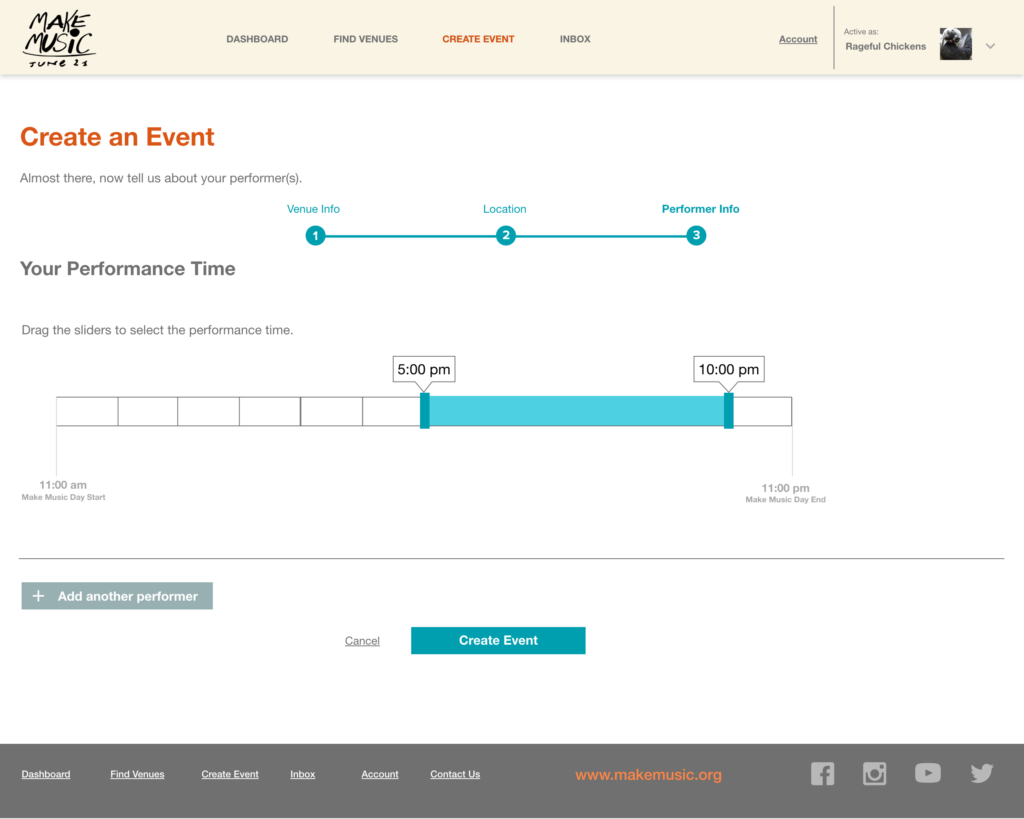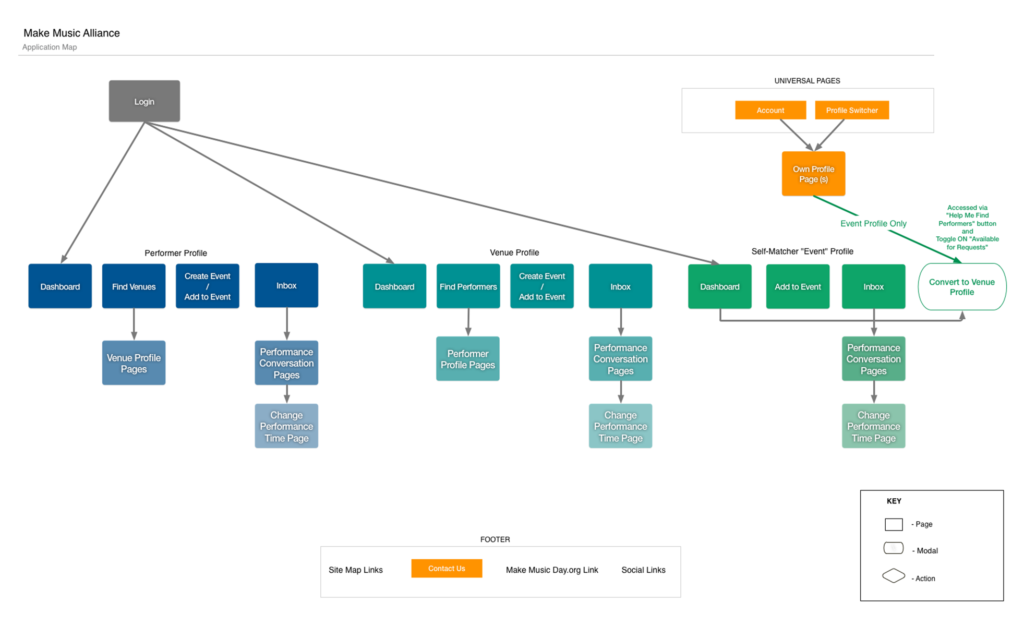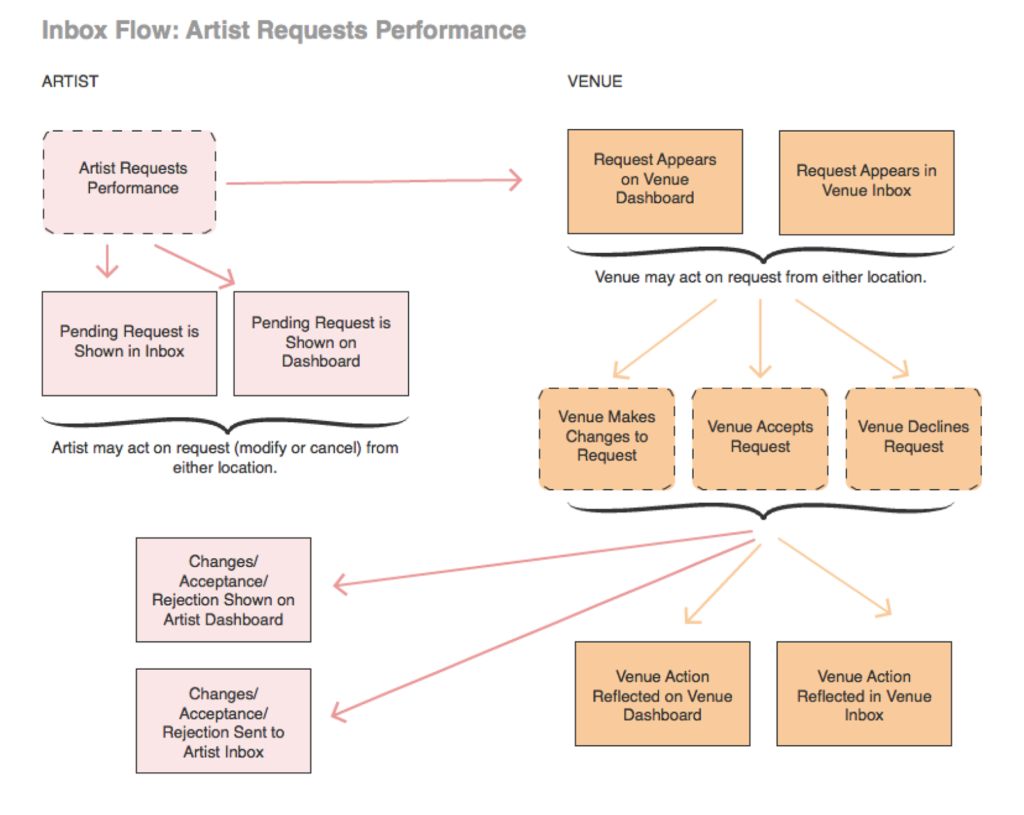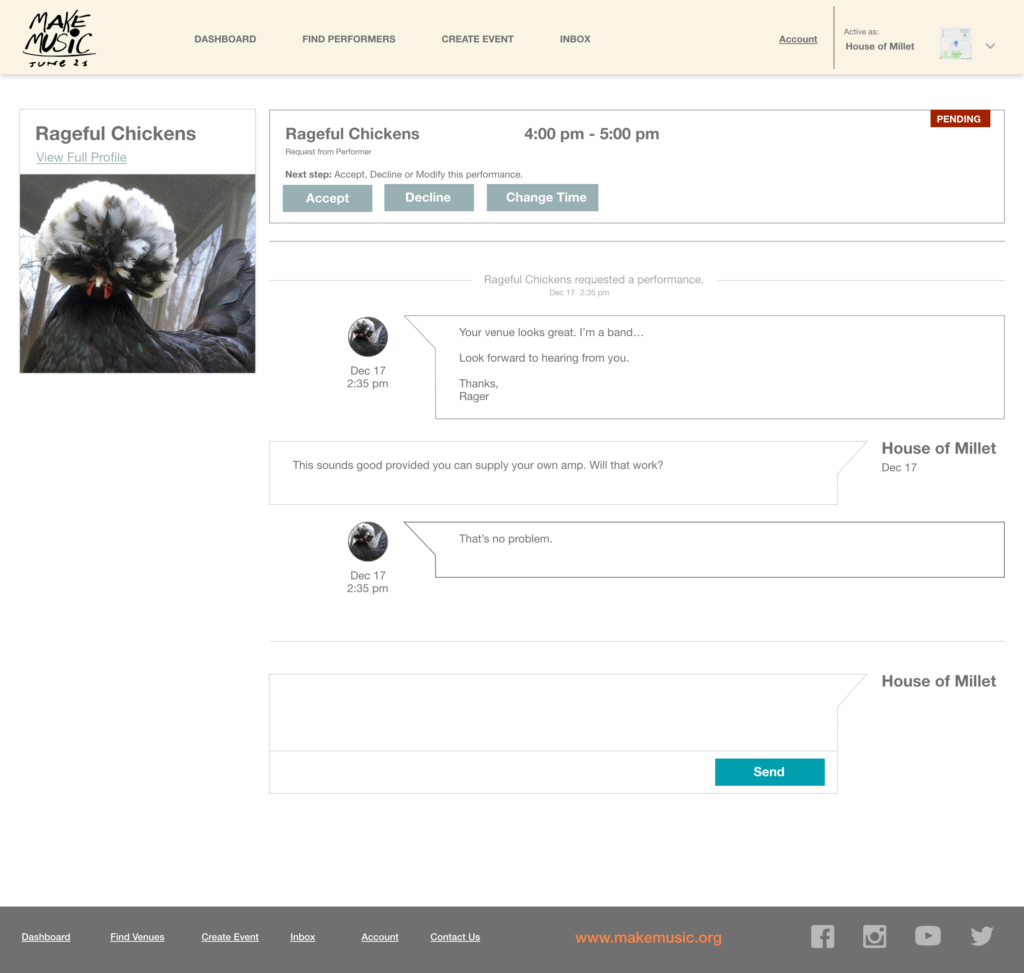Project Description
Make Music Alliance needed a revamp to their “matchmaking platform.” This non-profit organizes music festivals in over 1,000 cities, in 120 countries around the world. These community-led events are held city-wide on the summer and winter solstices. To do this, they depend on musicians and venues “matching up” on their platform to create events.
L3A’s Role
L3A started by conducting a UX audit of the platform and interviewed stakeholders and current users. Next, we developed a strategy for improving and streamlining the task flows throughout the application. Finally, we provided deliverables that used existing visual styles and were ready-to-build for the developers.

Managing Hybrid Roles
Instead of matching with venues, many performers want to create their own venue for Make Music Day. For example, a musician might set up in front of their garage. This reasonable scenario presented a role definition issue that wasn’t supported by the existing interface. To solve this, we added an easy step-by-step process to allow an artist to create their own event without creating a separate “Venue” profile.


Better Inbox Experience
In addition to helping self-matching performers, Make Music wanted to increase communication within the platform. To do this, we used contemporary inbox patterns, and focused the inbox user flow around performance requests. These requests are the main transaction in the application and now everything to do with them is held within an inbox conversation thread.
Sample documentation


